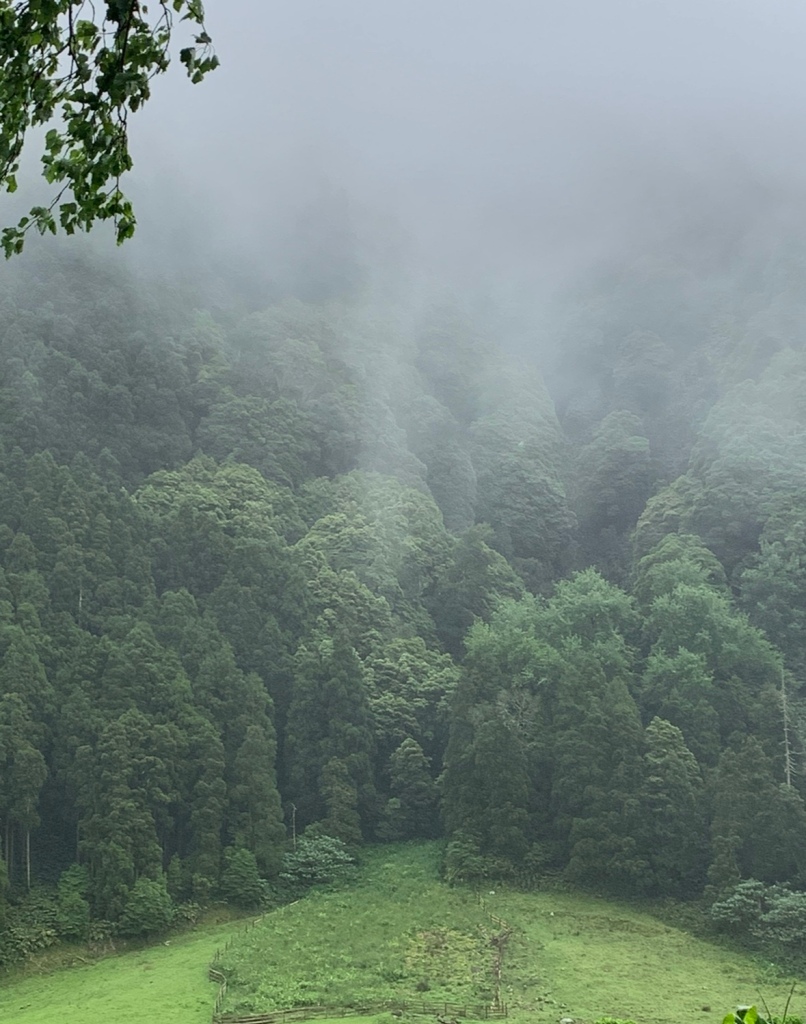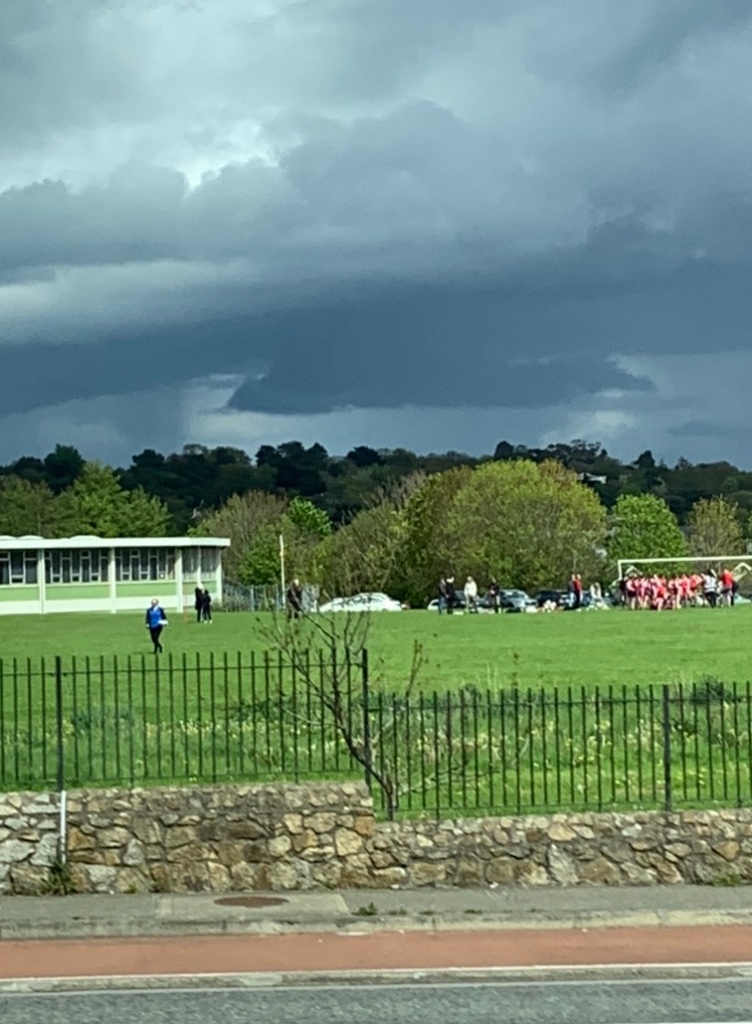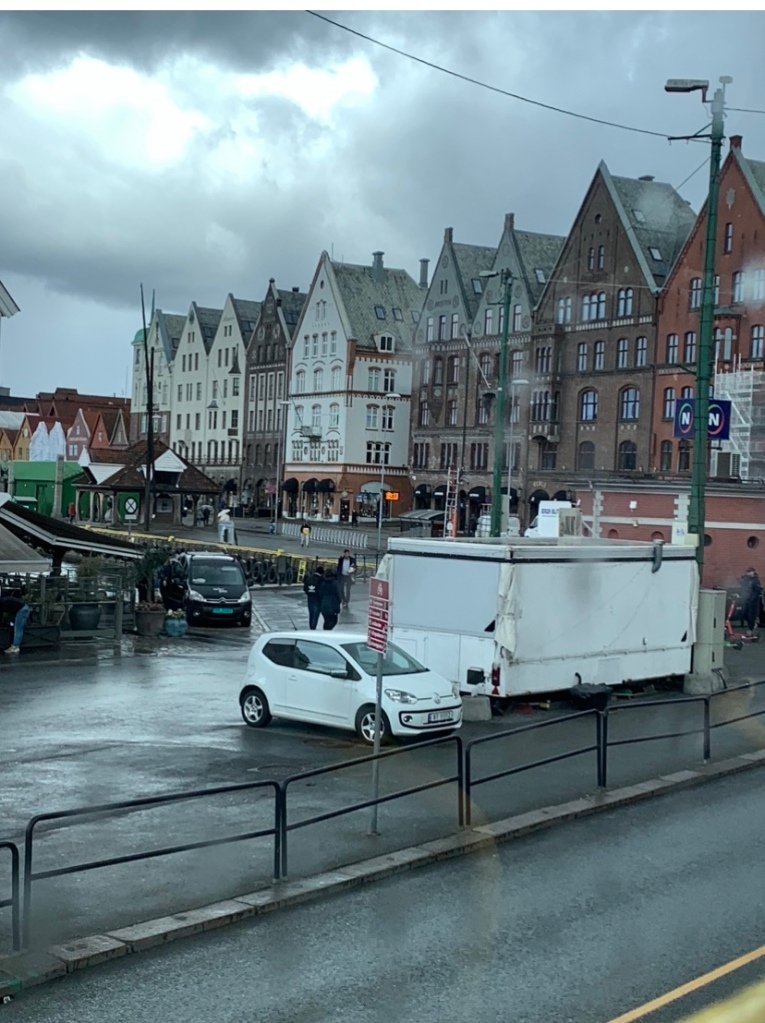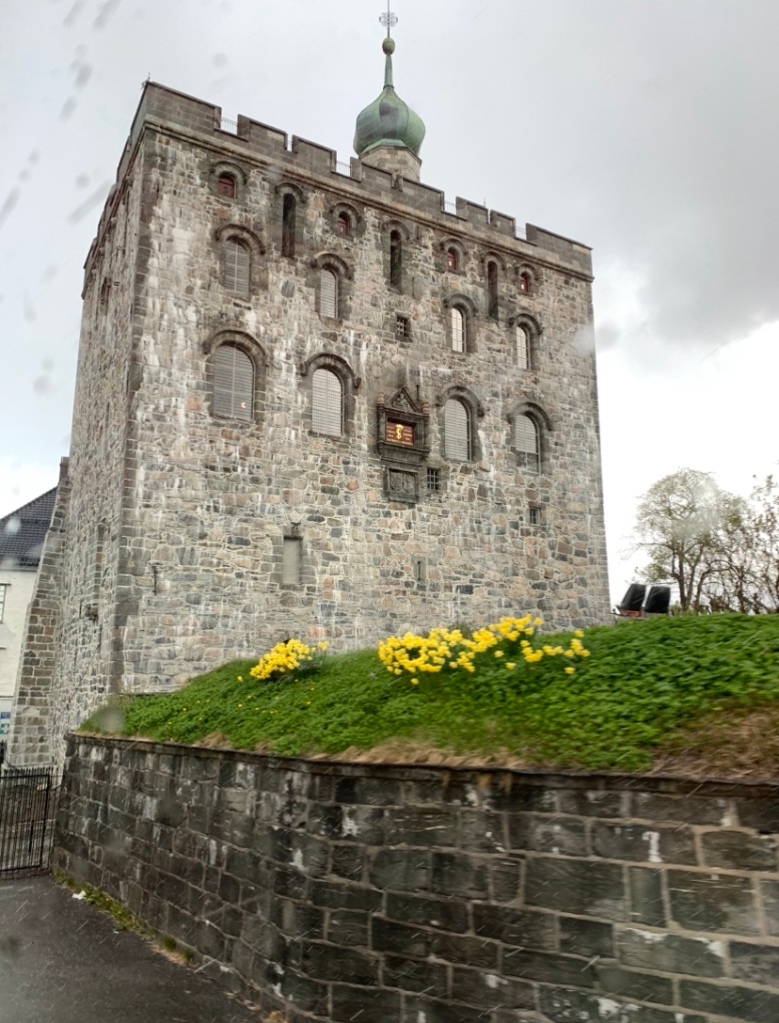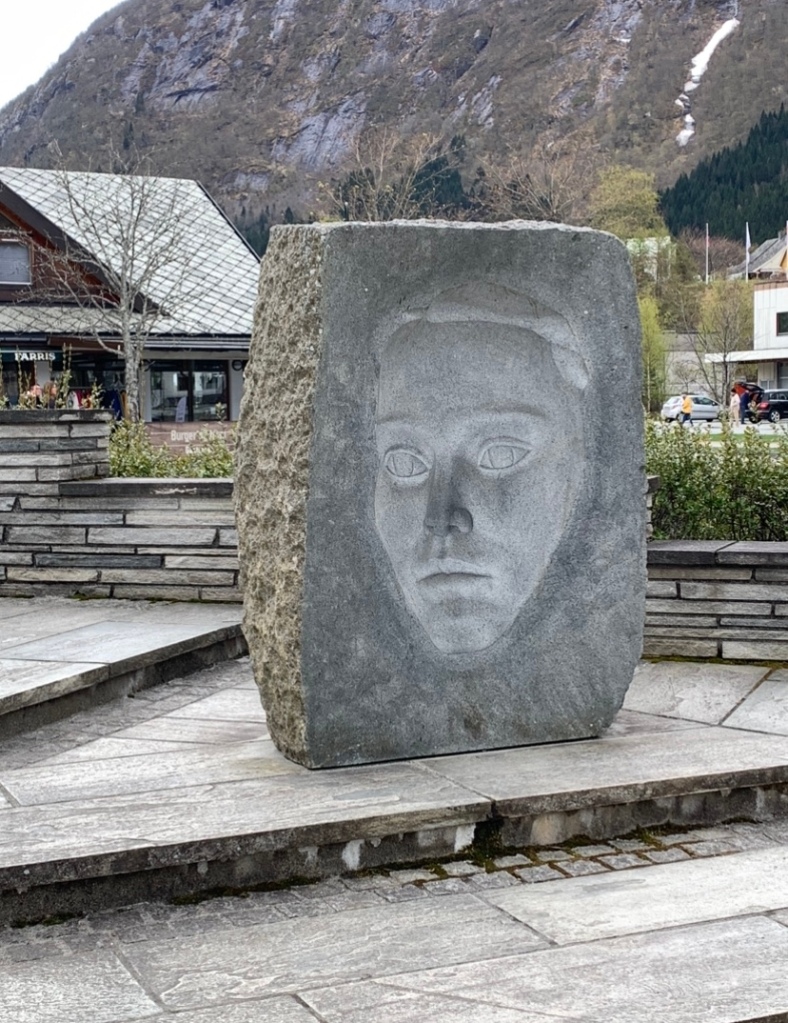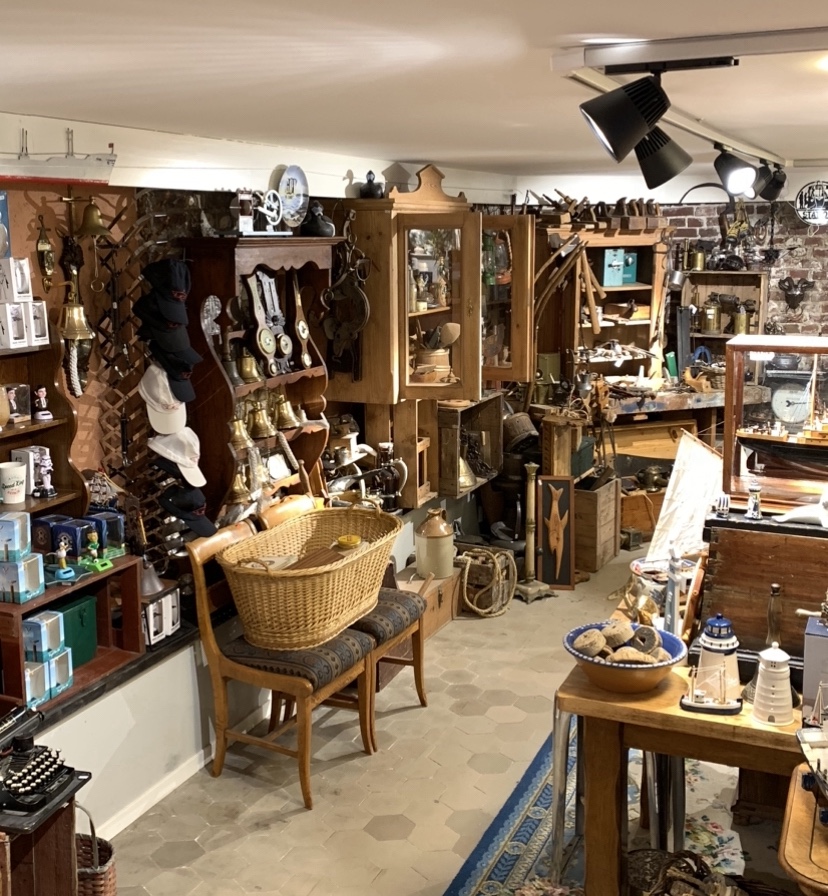Real travel requires a maximum of unscheduled wandering, for there is no other way of discovering surprises and marvels, which, as I see it, is the only good reason for not staying at home. – Alan Watts

It is still dark as we sail into the port of Praia de Vitoria, on the island of Terciera in the Azores. This is the last port in our long voyage. Tomorrow we head back across the Atlantic to pick up our suspended lives at home.
Across the harbour town spreads out in a glittering carpet of light. On the hill above is a brightly lit figure of the Immaculate Heart of Mary. It resembles the Christ the Redeemer monuments I’ve seen on so many continents now. I join my morning group at our usual outdoor table and wait for sunrise.

I stand on deck with my coffee, enjoying the not quite cool air of predawn. The port is an industrial dock in the countryside across the bay from town itself. Distant whiffs of farm blend with faint mechanical smells of industry and construction.

It is heavily overcast, so there is no dramatic dawn today. At least there’s no rain!
David and I have a leisurely breakfast. Today we are taking the shuttle into town and exploring on foot.
We want our last port to be a small, intimate greeting, not a mad race for the finish. We set off after the stampede for the excursion busses dies down.
Although we can see town across the harbour, it’s at least a twenty minute ride by shuttle. We pass the Forte de Santa Catarina, built in 1580. It was meant to protect the town from Spanish invasion.

A year later, the Spanish cleverly bypassed the armed fortifications. They planned to invade Terciera by landing on a beach 10 km to the south. This was thwarted by the release of an enormous herd of cattle onto the beach. Incredibly, the Spanish retreated. I have no idea why this worked. I know soldiers are not always sailors. Perhaps after facing the stormy Atlantic in small ships without stabilizers, the noise and smell of farm animals was simply too much. Maybe coming ashore expecting a glorious battle remembered after in song but facing the rigours of animal husbandry instead was an affront to their dignity. I will never know. I do know my lifelong perception of Spanish Conquistadors has tarnished considerably on learning this. I also have a new and profound respect for Portuguese cows.

We pass farms with red tiled roofs on white cottages, surrounded by small fields, bordered by stone fences. The land, at least in this part of Terciera, seems gentler and less dramatic than yesterdays tour near Ponta Delgada.

Soon the shuttle drops us at Old Town, Praia de Vitoria. Town is quiet, and little seems to be open. The municipal market is just setting up displays of cabbages and peppers.
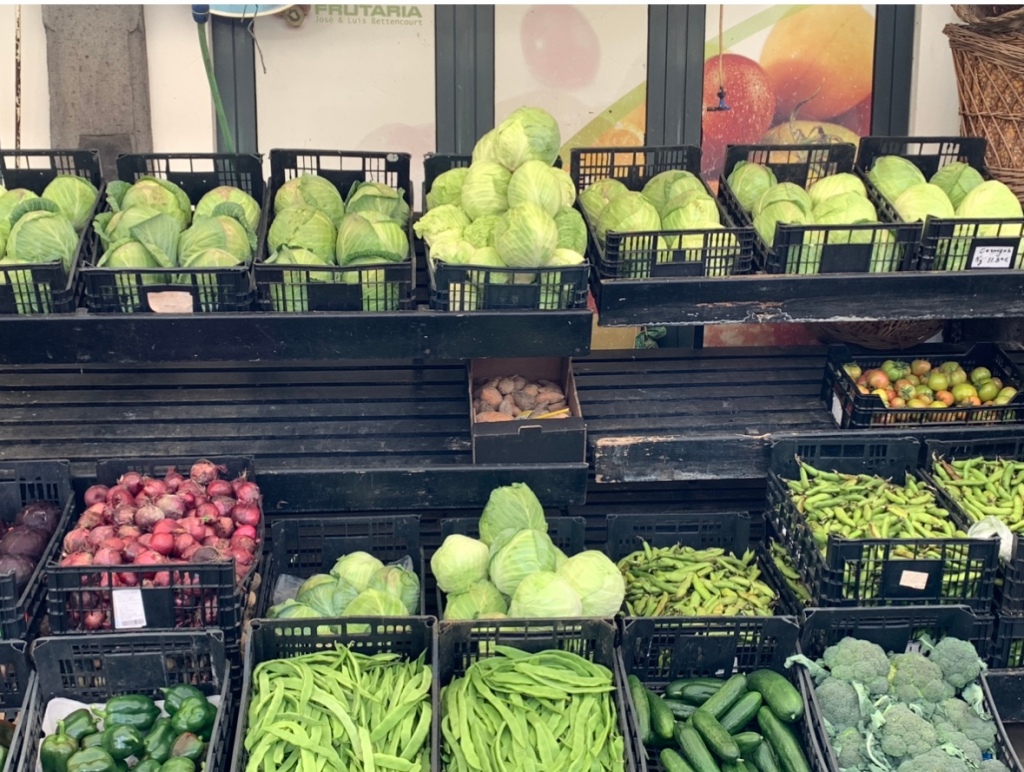
Across the road is the municipal garden. It is small but peaceful, enhanced by doves cooing. In the center is a large tree, whose wide trunk hints at a long history. The sun appears briefly and releases the fragrance of bright red geraniums.



We continue down the road. We find ourselves on a pedestrian boulevard leading steeply downhill. It is cobblestone, with an interesting mosaic of black and white stones. They make beautiful designs the length of the street. After the disaster in Puerto Rico, I carefully test the shiny white cobbles with my feet. At least it is dry today. In the rain these would be as slick as the lovely blue glazed cobblestones that led to David’s bad fall in Old San Juan.



The road leads down towards the bay. Beyond the bottom you can see the zigzag path going up a green hill to Miradouro Do Facho. This viewpoint is at the feet of the Immaculate Heart of Mary statue I had spotted from the ship. The monument is known as the Gazebo Torch.

We go up, and I mean UP, a short side street to a beautiful old church.


This is Igreja Matrix de Santa Cruz, Church of the Mother. In a town full of churches, this is THE Parish church, founded in 1456, completed in 1517. It has been extensively rebuilt three times since after major earthquakes. It contains elements of each period from each restoration, as well as vestiges of the 15th century original.

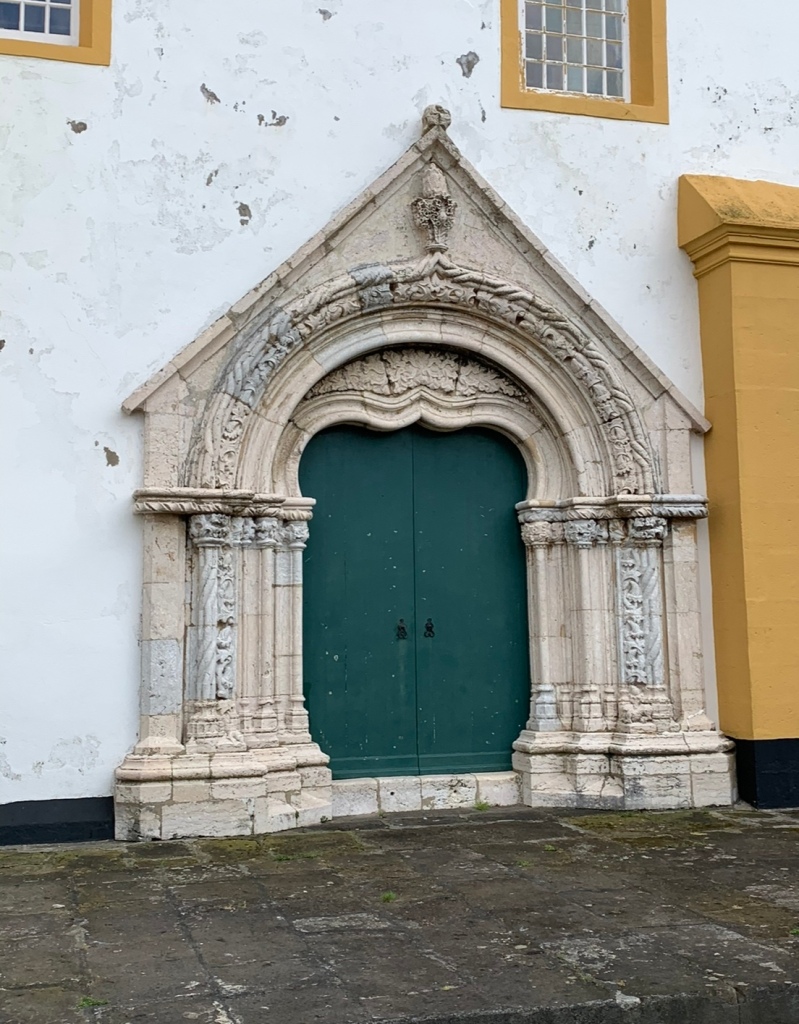
Around the church square are outbuildings echoing the main church in style or colour. The church is open today, and we go inside.

The the walls, ceilings, and sanctuary are very ornate. Chapels lead off the main church, with one bricked over where the most recent major quake destroyed it entirely. Chunks of archway sit on the edge of the square outside. They are too broken to use, yet too historically precious to discard.


We wander away from the boulevard along the side road. There are old and fascinating doorways and stone walls with nasturtiums tumbling over them.





Down the hill, two circus like blue and white striped spirals catch my eye. These belong to Igreja Do Miseracordia, Church of Mercy.

This blue and white church was built in 1521, as part of the first hospital of the Azores. The edifice notes that the church burned down in 1921, and was rebuilt in 1924. For some reason, the earthquakes and rebuilds in between aren’t worth mentioning.


We wander back out to the pedestrian boulevard. It is much busier now, and the stores are open. Bustling cafes have placed bistro tables and chairs on the cobbled walkway. We follow the mosaic walk to the waterfront. On one side of the road there are sculptures and yachts and the famous beach area.

Of course I go to the beach. I walk barefoot in the sand along our last beach of the world tour. The Atlantic wind blows ocean spray in my face, and I taste the salt. Across the harbour the Zuiderdam waits, ready for the long run home.


On the other side of the road is a newer plaza of shops and cafés. I have a last look at Portuguese cork products. Some shops have beautiful and expensive artisan Portuguese cork handbags. Other shops have much cheaper purses. On closer inspection they are cheaply produced of paper thin cork and made in China.

Sticking to the mosaic cobbles of the pedestrian boulevard we make our way back up through old town to the shuttle stop. It is sunny here now. All the shops are open, and the street is getting crowded. We take our last look at doorways and hanging plants. I take a few last photos of those amazing hand-painted tile street signs.




Back on board, we have our final sailaway drink. It is almost quiet, much more subdued than the wild celebration we had leaving Cape Verde at the end of the Grand Africa.


Wine in hand, I salute the Azores. I also toast the cows, peaceful yet ever on the lookout for invading Spaniards.

Ahead of us is a week of packing and saying goodbye as we cross the Atlantic. After a short stay with my cousin, we will return home and fit new habits into old routines.


The trip of a lifetime is coming to an end. On the other hand, there’s still so much more of the world to see – isn’t there?
I’ll give you a call when we’re ready for next time.

Senses of Praia de Vitoria:
The sight of the white mosaic cobblestone patterns on the pedestrian avenue.
The sound of doves cooing in the municipal garden.
The feel of the cool sea breeze on the warm sand of the beach.
The smell of geraniums in the sun.
The taste of wine toasting the sailaway from the last stop of our Grand Voyage.

Today’s Tip:
The strangest things can determine the course of history. For example, cows on the beach.








